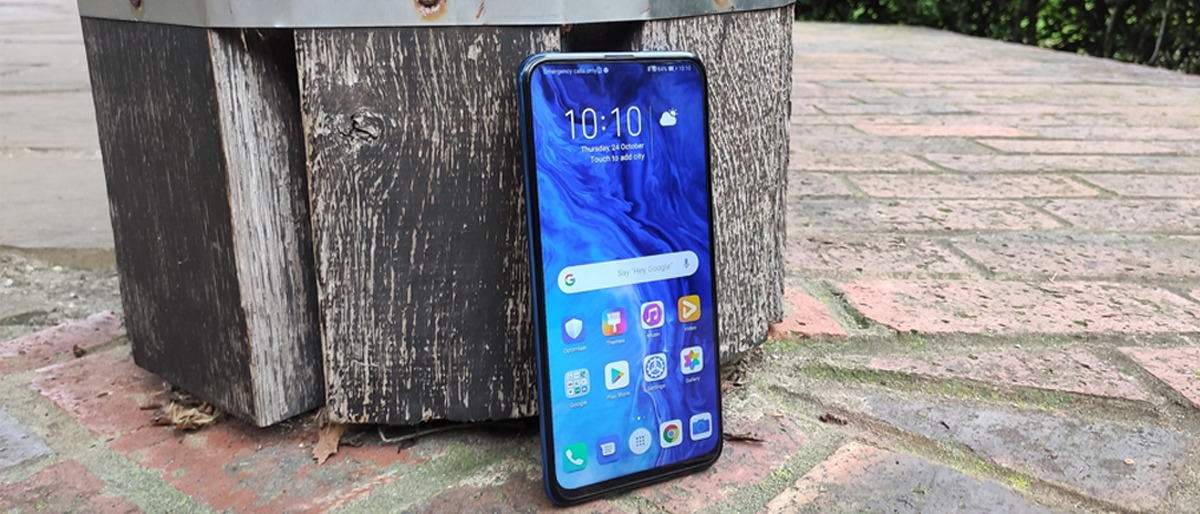Tom's Guide Verdict
It’s not got many sophisticated features to show off, but the Honor 9X is one of the best value phones around.
Pros
- +
Large, surprisingly bright screen; Decent cameras; Super cheap
Cons
- -
Low-powered CPU/RAM; Poor wide/low-light shots; No US availability
Why you can trust Tom's Guide
Wanting a cheap phone and a large phone don’t have to be mutually exclusive. Google’s Pixel 3a XL is easily the best example of that, thanks to its fairly spacious 6-inch display while delivering efficient performance for $479. But Huawei-owned Honor thinks you can go even bigger and even cheaper.
Enter the Honor 9X, which gives you an additional half an inch of display for £249 (around $320). It's just as well, as some of the 9X’s other specs simply don’t match those of rival budget phones. Despite some missing features, the Honor 9X is a a solid phablet for someone who isn’t concerned about the latest and greatest from fancier phones.
Honor 9X review cheat sheet
- The 9X’s 6.59-inch display can’t be beaten for the price, and performs surprisingly well for an LCD panel.
- A glass back with a glittering design makes the 9X look and feel unique despite the low cost.
- The performance is passable, but as you’d expect for this price, it’s not blazing.
- Thanks to an early release in China, this phone still has access to Google apps and Google Play.
- Photos taken during the day look great taken with the 48MP main camera, but low-light pics do not.
Honor 9X Specs
| Starting Price | £249 ($318 converted) |
| Screen (Resolution) | 6.59-inch LCD (2340 x 1080) |
| CPU | Kirin 710 |
| RAM | 6GB |
| Rear Camera | 48MP main (f1.8), 8MP ultra-wide (f2.4), 2MP depth assist (f2.4) |
| Front Camera | 16MP (f2.2) |
| Storage | 128GB |
| Micro SD? | Yes, up to 512GB |
| Operating System | Android 9 with EMUI 9.1 |
| Battery | 4,000 mAh |
| Headphone Jack? | Yes |
| Colors | Sapphire Blue, Midnight Black |
| Size | 6.44 x 3.04 x 0.34 inches (163.5 x 77.3 x 8.8mm) |
| Weight | 6.94 ounces (196.8 g) |
Honor 9X Price and Availability
In the UK, the single 4GB RAM and 128GB storage model costs £249, and has been in sale from Nov. 13. You will be able to get it from various retailers including Honor's own site, Amazon and Argos, and can order it now from Carphone Warehouse.
Unfortunately, this phone isn’t coming to the US via your normal phone store. That means U.S. shoppers would have to buy an unlocked version online while making sure that the phone’s compatible with their wireless carrier’s network. That’s an awful lot of hoops to jump through in the U.S. when comparable phones to the Honor 9X are readily available.
Honor 9X design: Bold with hints of class
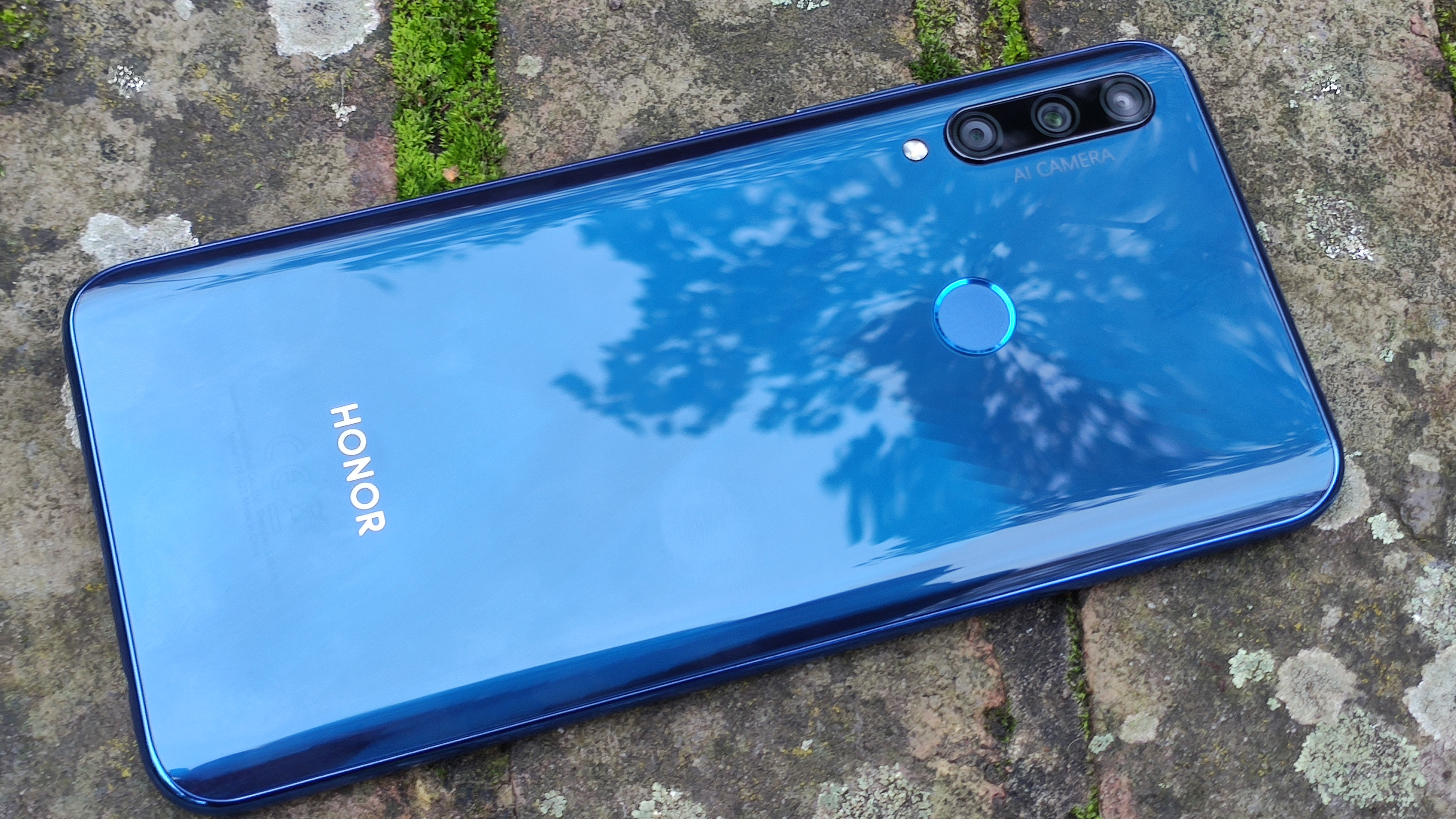
Lifting the 9X out of its smart white box, the phone feels surprisingly premium. The chassis’ materials — particularly the 3D glass back — give the impression of a more expensive handset, particularly when you compare it to the polycarbonate body of the Pixel 3a. Still, the 9X’s build quality doesn’t match Google’s, symbolised by the large seams between the back and front panels of the 9X, which are large enough to pinch your fingers a little when you run your hand over them.
The Sapphire Blue color option of my review unit is definitely the one you want if you buy this phone, as it’s the only one that comes with the “Dynamic X Design“ on the back. The back of the phone looks only slightly textured under low to average lighting, but when you catch a bright light, you’ll see an X-shaped pattern made of tiny diamond-shaped elements appear on the back of the phone. The 9X’s Midnight Black colorway is just a plain glossy surface; far more subtle but a lot less interesting to look at.
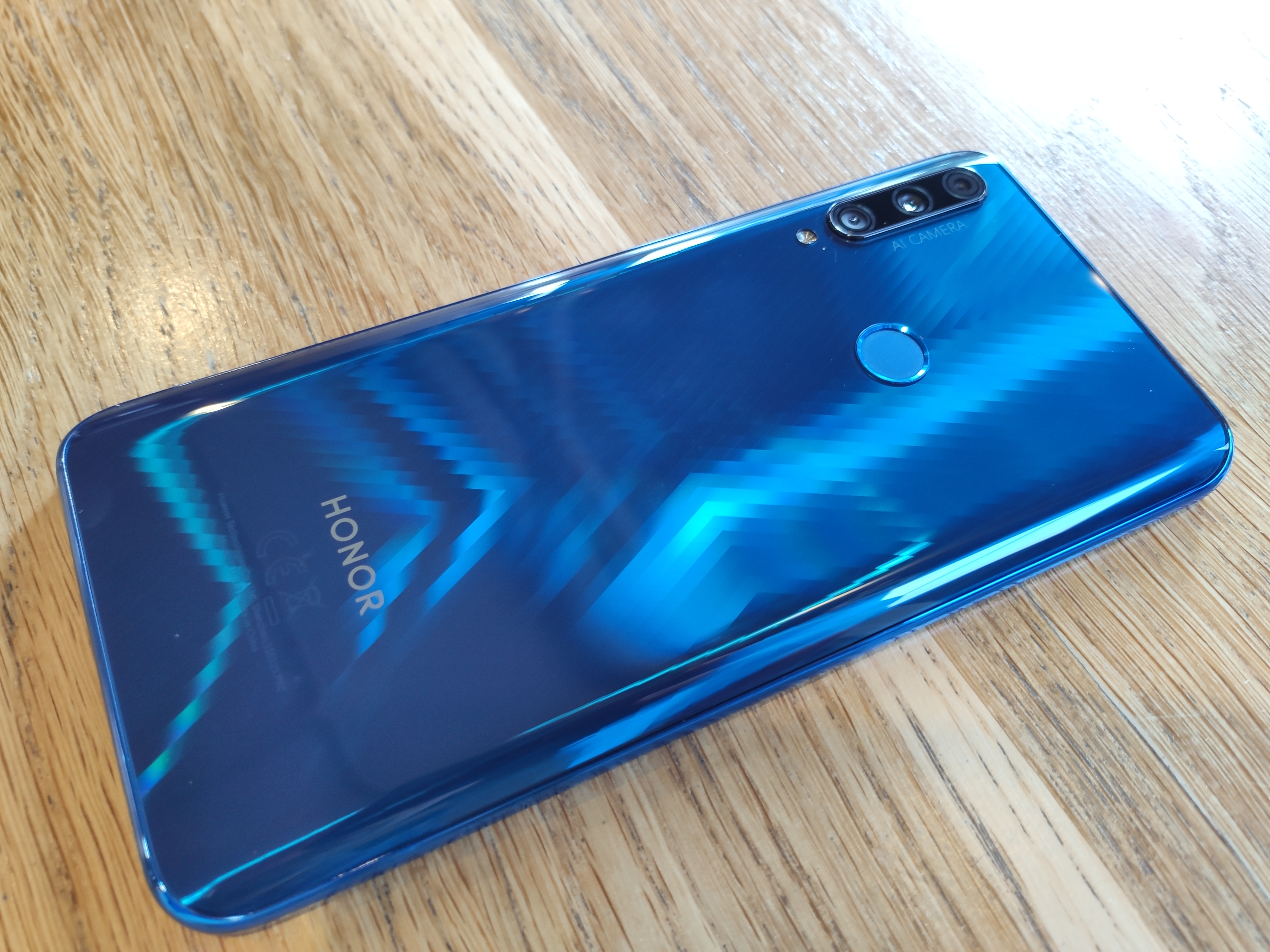
The only things breaking up the X design are the rear center-mounted fingerprint reader and the rear camera array and flash tucked into the top left corner. The back panel is also curved, which adds to the good looks of the 9X while letting it sit nicely in your hand.
There’s not much to talk about from the front. The 9X’s display is notch-free, but thre’s a very noticeable chin bezel and a smaller forehead containing the call speaker. Without the punch-hole notch found on the Honor 20 Pro or View 20, the 9X doesn’t look like a 2019 Honor handset.
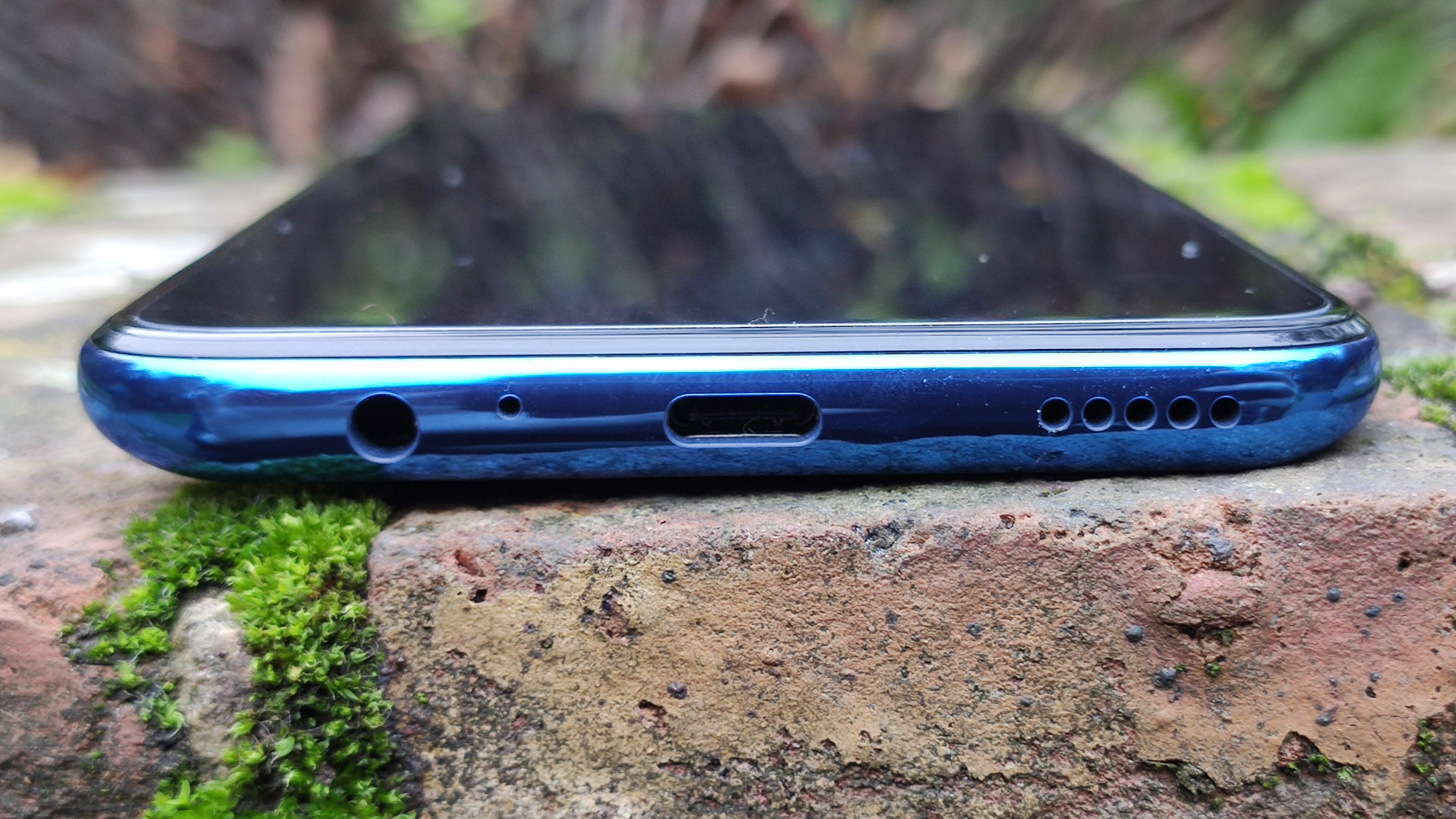
Around the edges, you’ll find the usual power and volume buttons on the right side, the pop-up camera module (a first for Honor) and SIM tray on the top, and on the bottom a speaker grille, USB-C port and, perhaps most excitingly for some, a good old-fashioned 3.5mm headphone jack. If you’re a tech user on a tight budget, chances are you have yet to invest in wireless headphones, so it’s smart of Honor to keep this feature on the 9X.
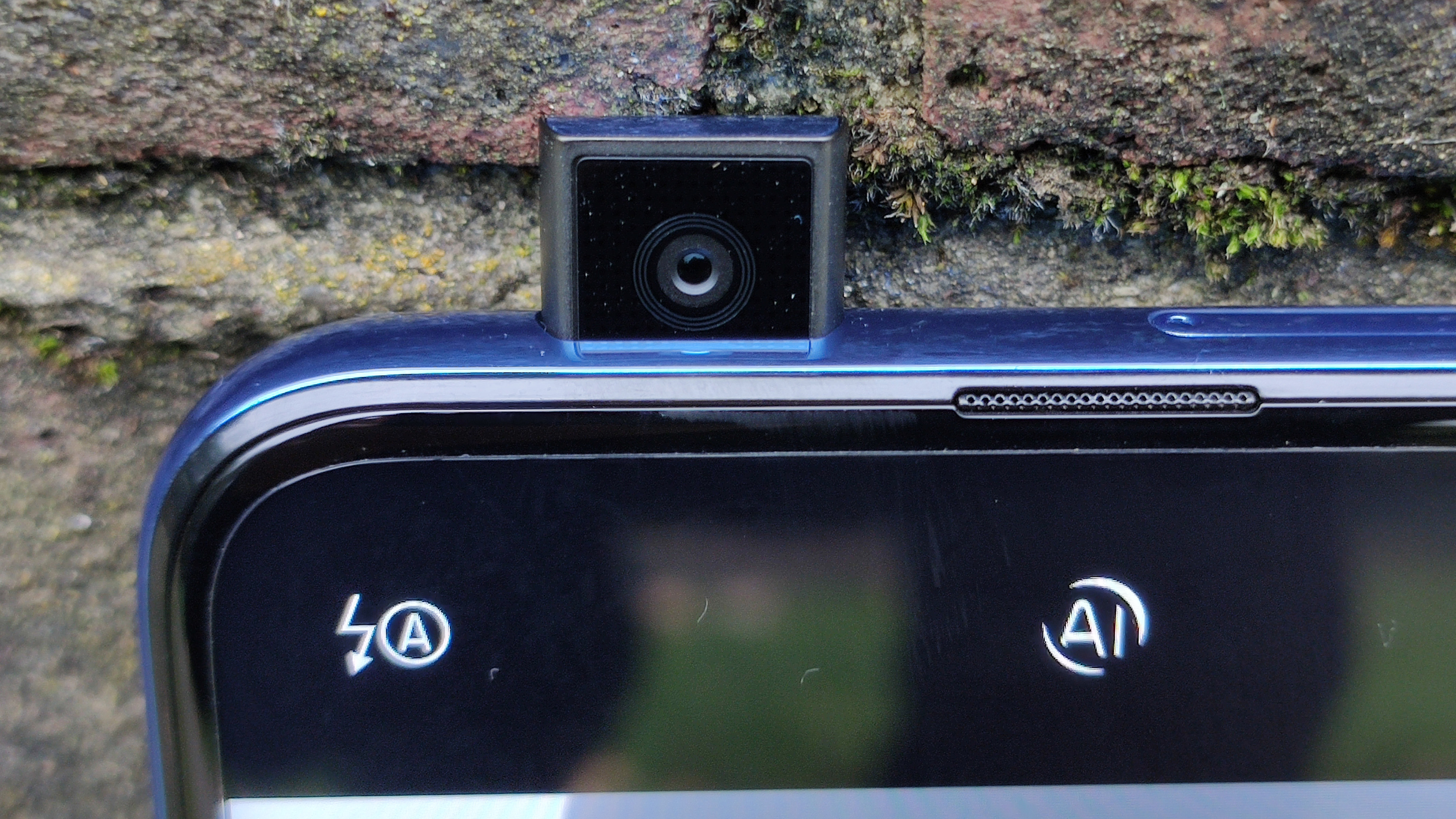
Honor 9X display: Big and surprisingly bright
The mammoth 6.59-inch FHD LCD display is why this phone has such an intimidating size. It’s a lot of real estate for the price, particularly when you consider it comes without a notch or punch-hole. Using LCD instead of OLED helps keep the price down, but does mean you’ll lose out on overall image quality.
Watching the final trailer for Star Wars: Rise of Skywalker on the 9X’s screen was pretty average. The images of the Resistance or Rey fighting Kylo Ren were rather muddy. A brighter recipe video instructing you how to make shakshuka was at least colorful, but still suffered from a lack of definition.
You would expect that the Pixel 3a, with its OLED display, would have a higher maximum brightness than the 9X. This isn’t the case however. The Pixel 3a maxes out at around 400 nits, while Honor claims the 9X can go up to 480 nits. That’s still a little dim compared to many other phones, but it seems that at the cheaper end of smartphones, the 9X shows that LCD still produces a competitive screen.
Honor 9X cameras: Keep the lights on
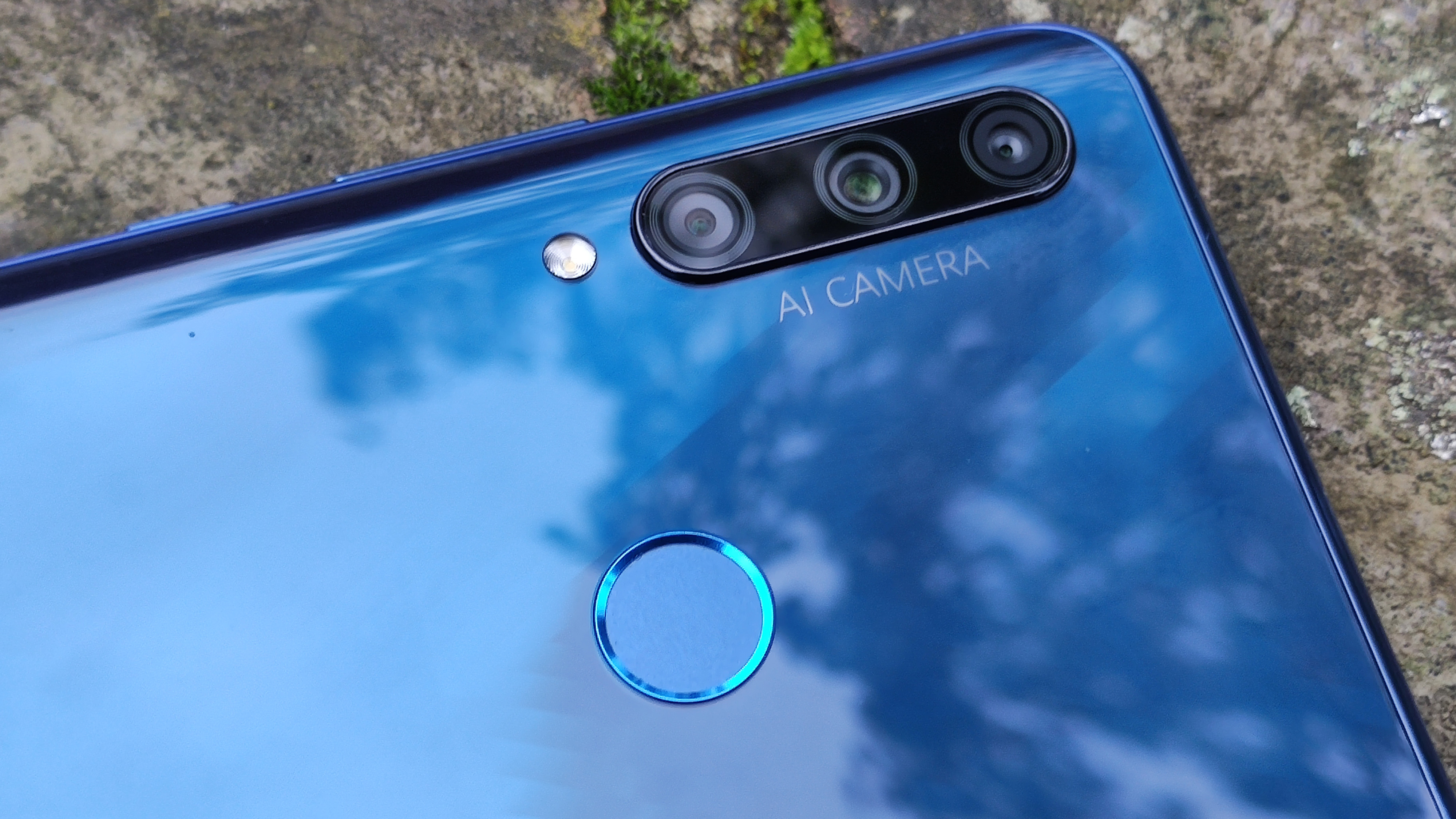
There are three cameras on the back of the 9X: a 48-MP main sensor, an 8-MP ultra-wide sensor with a 120-degree field-of-view and a 2-MP depth assist sensor. (You would be within reason to argue that this one doesn’t count as a camera on its own.) There’s no telephoto lens to round out the holy trinity of 2019 camera functions, but it’s understandable at the price: Honor has only put a zoom lens on its flagship 20 Pro, which costs twice as much as the 9X.
I took the 9X and the Google Pixel 3a out for daytime and nighttime photo comparisons. Although the Pixel 3a isn’t the same size as the Pixel 3a XL, the more relevant competitor to the 9X, the camera software and hardware is identical, so the comparison remains fair.
In this normal shot of Covent Garden, the Pixel 3a’s image is notably colder than the 9X’s image. While sometimes a cold image can be a bad sign, here it’s a more accurate depiction of the very bright day.
The Honor wins by default in the ultra-wide-angle shot competition simply because the single-lens Pixel 3a doesn’t have one. The only problem is that the ultra-wide lens on the 9X is only 8MP, which is fairly low resolution and therefore produces so-so shots at best.

For the pictures I took of this muffin, I switched the 9X’s settings so it took images at its full 48-MP instead of the usual 12-MP resolution, which it does to save memory and to allow for digital zoom and other photo functions. This resulted in a far brighter image than the one produced by the 12.2 megapixels that the Pixel 3a manages. The two different shots make different parts of this baked treat look better — the cake itself on the Honor, the jam topping on the Google. Whichever picture you prefer, it shows that under the right circumstances the 9X can take photos with the best of them.
Sadly, the 9X isn't suited for low-light photography. Taking it and the Pixel 3a out to Kings Cross one evening, the Honor is neither effective at dealing with bright light sources, nor at revealing detail hidden in the darkness. A big contributor to this is that you can only use night mode at an 8MP resolution, unlike the Pixel 3a which lets you use its maximum 12.2MP in its Night Sight mode.
These narrow boats show up fairly well, making what was a scene lit only by distant lights on the other side of the canal look like a grim afternoon. However, the Pixel 3a conjures up something that looks like it was taken during a bright day. If you were looking for something that still looked like it was taken at night, maybe the Honor is more to your taste, but I really like how the Google phone was able to show me colors and detail I never would have been able to with my own eyes.
The two phones are more evenly matched in this wide open scene with a mix of dark and bright spots, but once again the Pixel 3a brings out the details and color much more than the 9X achieves, with the Honor also capturing large flares from the bright spotlights illuminating the square in front of Kings Cross Station.
MORE: Motorola Razr 2019 Rumors: Release Date, Price and Specs
The pop-up module is a new housing for Honor’s 16-MP front camera The module contains fall, pressure dust and splash protection to make sure it doesn’t get damaged. It is a little slow to open and close, however, due in part to the length of the module, which could cause you a problem if you wanted to quickly take a selfie snapshot.
The two phones fare well with normal selfie shots. The Pixel 3a does its normal post-processing magic and gives me a healthy looking skin color while the Honor 9X shows my face in its more natural state. The scene behind me looks much better on the Pixel, though, which helps sway my opinion in its favor in this case
Neither phone does a brilliant job with portrait mode enabled. The Pixel 3a crops too wide, including some of the building behind me in the non-blurred area, while the 9X crops too closely, trimming the sides of my head and part of my ears. I don’t really like either one because of these faults, but if I had to choose a favorite, I’d side with the Pixel 3a again.
This was a hard test for the Honor 9X, as the Pixel 3a is a stunning photography phone for its price. It holds up fairly well when you stick to the main rear sensor, but using the wide angle or selfie cameras or using night mode shows a greater quality gap against Google’s.
Honor 9X software: The only surprise is Google
To answer the biggest question you may have about the 9X — yes, it runs Google apps. Honor is owned by Huawei, who is currently on a US government black list that prevents U.S. companies from selling it hardware or software, and that’s affected Huawei’s relationship with Google. It’s the reason why the Mate 30 can use the Android operating system, but not the Google Play Store. However, because the 9X was first released in China before the ban came into force, you can still get all your favorite Android apps on the 9X with the version of the phone sold in other countries.
The operating system is not Honor’s own Magic UI, which it saves for its higher end models, but Huawei’s EMUI 9.1, which means you get an Android 9 Pie user experience. There is nothing wrong with Android 9, even if Android 10 gives you more and better features, but you do get a host of Huawei bloatware apps along for the ride, which you likely won’t find all that useful. Some examples include Huawei Video and Huawei Music, which are media players requiring little explanation, or the App Gallery and Honor Store, which sell you apps and Honor products respectively. However, Party Mode, which allows you to connect Honor phones together and play music through them simultaneously is a fun idea, allowing you to crowd-source a surround sound system if you have enough friends with compatible devices.
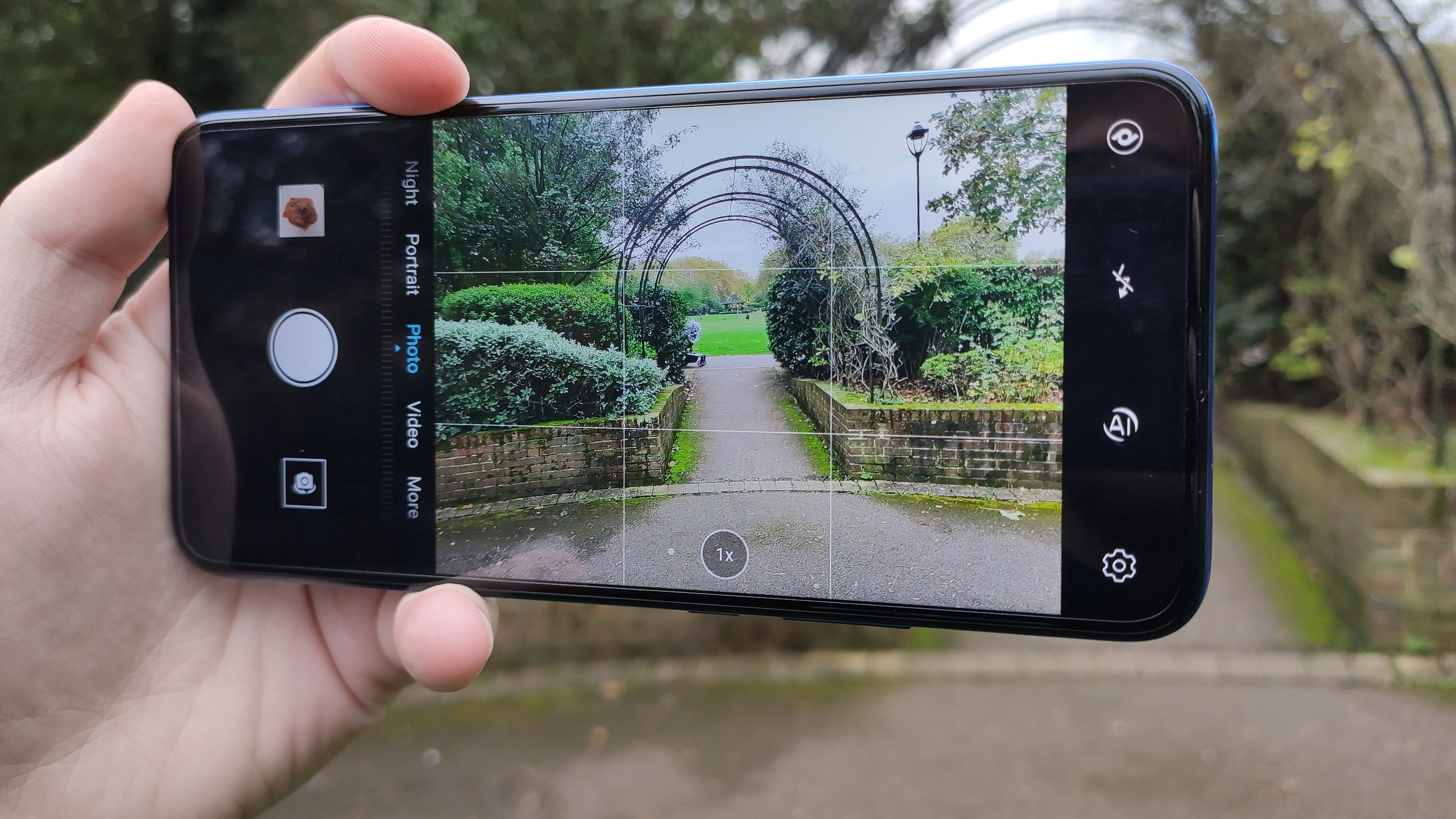
The UI may not be so distinct as an Honor product, but it works as well as it ever did, with pleasant app and background designs, and the option to swap between having an app drawer or just a home screen, and between two/three virtual buttons or gesture navigation. Honor is pushing the presence of GPU Turbo 3.0, its own gaming optimization software that works with over 20 popular titles to squeeze the best performance out of the phone, and of the AI Signal Enhancer to keep you connected to your multiplayer game by switching between the phone’s antennas to quickly recover a lost signal. These are both good features to have, but if you’re planning on doing a lot of gaming you may want to consider a more powerful phone than the 9X.
Honor is still promising Android security updates for its phones, but it’s not saying for how long. Be aware that if you buy this phone that you may end up without Google support unless the US-China trade war suddenly resolves and Huawei finds itself back in the U.S. government’s good graces.
Honor 9X performance: Fine for everyday needs
The 9X only has one set of internal specs options: a Kirin 710 processor, 6GB RAM and 128GB storage. It means that the 9X isn’t a powerhouse phone, but that’s still enough for everyday use and then some.
Trying out Asphalt 9: Legends was not as bad as you may think. Sure, there’s a graphical downgrade that makes all the car models look a bit jagged around the edges, but the game still runs smooth and responds to the touch controls without delay. The 9X managed to stay pretty cool during my play session, too, despite the heavy processing that would have been going on.
The 9X falls down on synthetic benchmarks. It scores 1,292 on the Geekbench 5 multicore test, and a paltry 873 on the OpenGL ES 3.1 Sling Shot Extreme benchmark by 3DMark, which goes up to 991 when you turn on the phone’s performance mode. For comparison, the Pixel 3a, which uses a Snapdragon 670 chip, fares a lot better. It manages a 1,352 multicore score on Geekbench 5 and 1,602 in the OpenGL Sling Shot Extreme benchmark. It’s a large gap for sure.
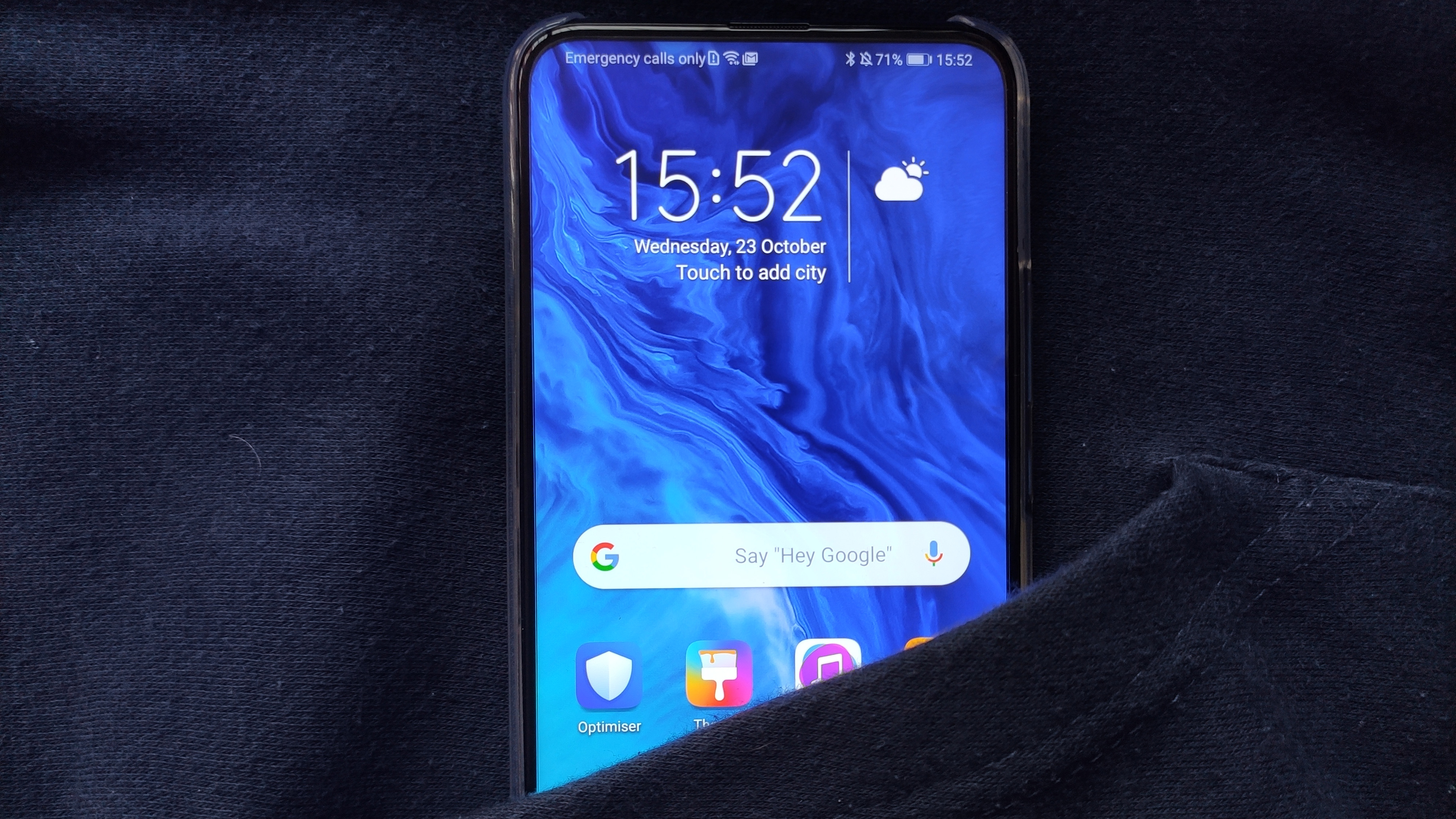
Honor 9X battery life: Slow to drain, slow to fill
The 9X is powered by a 4,000 mAh battery, which is only beaten in size at this price bracket by the Moto G7 Power’s 5,000 mAh cell, which is to be expected from a phone that focuses on battery life.
After performing my usual test of watching videos until the battery dies, the 9X survived about 10 hours of constant YouTube streaming with a little power still left in the tank. It joins a lengthening list of phones released this year that you could happily charge only every two days if you were careful with how you used it
The Honor 9X charges up via a 10W fast charger, which is on the slower end of the rapid charging wattage spectrum, but performs well enough. It manages a 16% charge from empty after 15 minutes, and 29% after 30 minutes. That’s slower than the Pixel 3a’s 18W charger, but the 300 mAh extra capacity in the 9X over the 3a XL means that you hopefully won’t need to charge as regularly.
Honor 9X bottom line
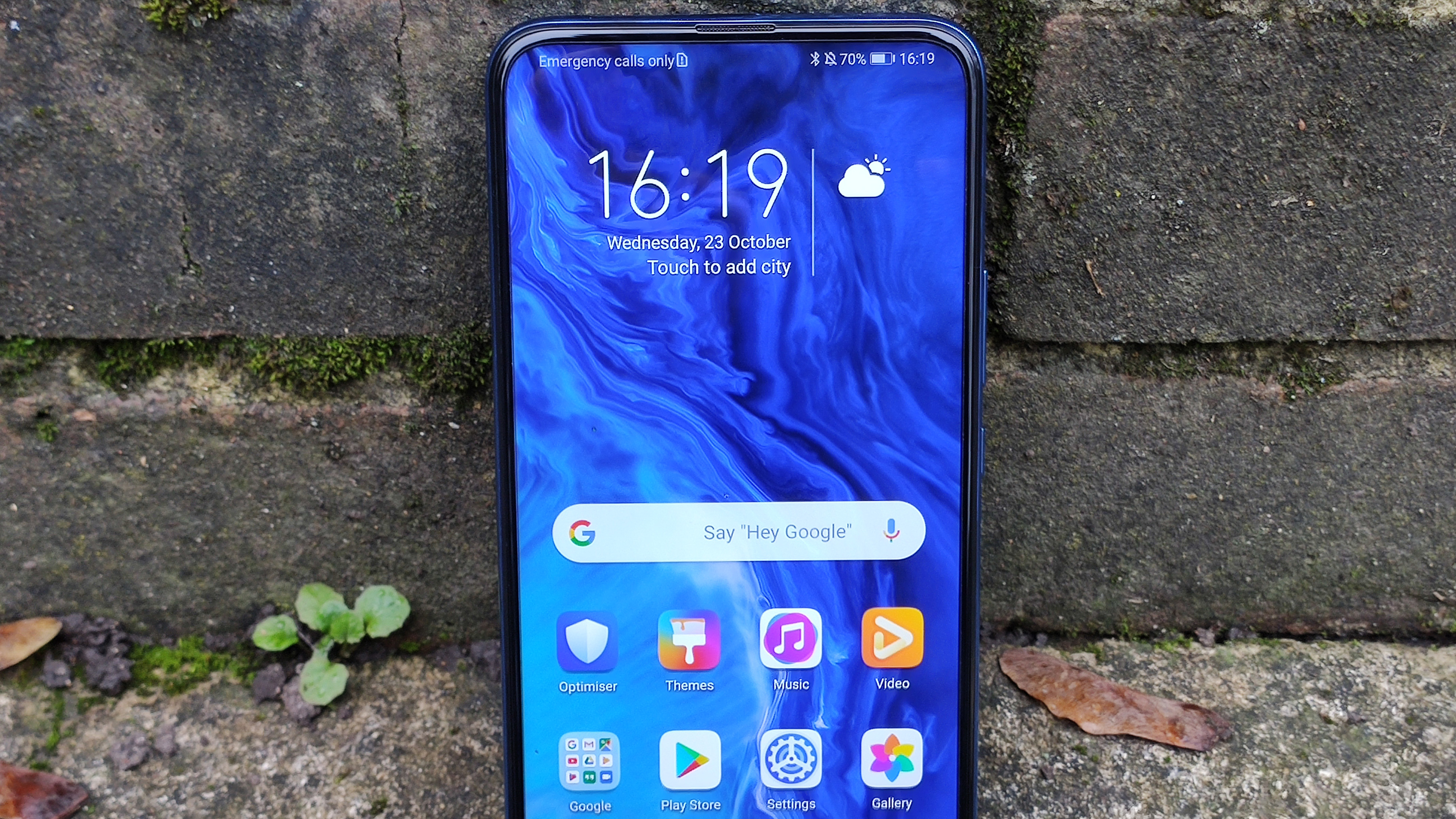
An ideal Honor 9X user would be someone who wants the most hardware they can get for the smallest price. It’s an efficient device with enough premium detailing to make it feel as special as devices two or three times its price.
There are obvious weaknesses with the Honor 9X, including a camera that falls flat in low light and just so-so performance.. However, the large notchless display, good battery life and solid camera performance (in normal lighting conditions) make this one of the better Android values we’ve tested.
If you can stretch to a Pixel 3a or Pixel 3a XL, you’re probably better off doing so. Aside from offering better cameras than the Honor 9X, these can use Android 10, are available in the US and aren’t at risk from suddenly losing out on Google’s support due to international politics. But if you want a larger display for less money, the Honor 9X is worth a look.

Richard is based in London, covering news, reviews and how-tos for phones, tablets, gaming, and whatever else people need advice on. Following on from his MA in Magazine Journalism at the University of Sheffield, he's also written for WIRED U.K., The Register and Creative Bloq. When not at work, he's likely thinking about how to brew the perfect cup of specialty coffee.
